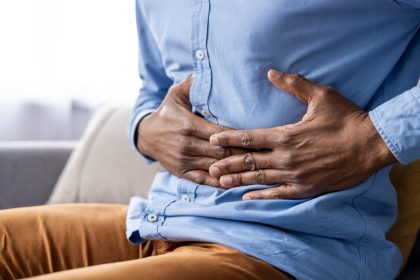Stomach flu, medically known as viral gastroenteritis, strikes without warning and can turn a normal day into a challenging ordeal. This highly contagious virus affects millions of Americans annually, causing inflammation throughout the digestive system.
The 4 critical steps medical professionals take
- Hydration strategy proves crucial during the first 24 hours of illness. Medical experts emphasize that proper fluid replacement makes the biggest difference in recovery time and symptom severity.
Water alone often isn’t enough when battling stomach flu. The body loses essential electrolytes through repeated episodes of vomiting and diarrhea, requiring a more strategic approach to hydration.
Medical professionals recommend starting with small sips every 15 minutes rather than drinking large amounts at once. This method helps prevent triggering additional nausea while ensuring the body retains more fluids.
Specific hydration solutions include: Clear broths provide both hydration and essential minerals Oral rehydration solutions help replace lost electrolytes Caffeine-free herbal teas, particularly ginger or peppermint, offer soothing properties Ice chips help maintain hydration when drinking proves difficult
- Rest becomes a powerful weapon against the virus. Medical research shows that proper rest can reduce recovery time by up to 50% compared to those who continue normal activities while sick.
Creating an optimal recovery environment makes a significant difference. Medical professionals recommend: Keeping rooms slightly cool, between 65-68 degrees Fahrenheit Minimizing light exposure, which can trigger headaches Reducing noise levels to prevent additional stress on the body Using multiple pillows to find comfortable positions that minimize nausea
The body requires extra energy to fight off the virus, making quality rest essential for recovery. Research indicates that interrupted sleep can delay healing by up to 24 hours.
- Food reintroduction requires careful timing and selection. Medical experts follow a specific protocol when reintroducing food after stomach flu symptoms begin to subside.
The classic BRAT diet (Bananas, Rice, Applesauce, Toast) remains popular among healthcare providers for good reason. These foods: Provide essential nutrients without overwhelming the digestive system Help firm up loose stools through natural binding properties Offer easy-to-digest carbohydrates for energy Contain minerals needed for recovery
Timing food reintroduction properly proves just as important as food selection. Medical professionals recommend: Waiting at least 2 hours after the last episode of vomiting Starting with small portions every 2-3 hours Increasing portion sizes gradually over 24-48 hours Avoiding dairy products for at least 72 hours
- Hygiene protocols become essential for containing the virus. Healthcare workers follow strict guidelines to prevent virus spread, especially important since the stomach flu virus can survive on surfaces for up to 7 days.
Proper handwashing technique matters more than most people realize. Medical professionals recommend: Using warm water and soap for at least 20 seconds Paying special attention to areas between fingers and under nails Washing hands immediately after using the bathroom Cleaning hands before handling any food or drinks
Warning signs that require medical attention
While most cases of stomach flu resolve at home, certain symptoms indicate a need for professional evaluation:
Inability to keep down liquids for more than 12 hours Signs of severe dehydration, including dark urine or dizziness Fever above 102 degrees Fahrenheit Severe abdominal pain Bloody stools
Prevention strategies that actually work
Medical professionals emphasize prevention as the best defense against stomach flu. Research-backed prevention methods include:
Regular hand washing with proper technique Immediate cleaning of contaminated surfaces Avoiding food preparation while sick Staying home for at least 24 hours after symptoms resolve
Recovery timeline expectations
Understanding the typical progression of stomach flu helps manage expectations during recovery:
First 24 hours: Focus entirely on hydration and rest 24-48 hours: Begin gentle food reintroduction 48-72 hours: Gradually return to normal diet 72+ hours: Return to regular activities while maintaining careful hygiene
Long-term gut health considerations
Research indicates that stomach flu can impact digestive health for several weeks after symptoms resolve. Medical professionals recommend:
Incorporating probiotic-rich foods after recovery Avoiding trigger foods for at least two weeks Maintaining a bland diet longer than might seem necessary Staying well-hydrated even after symptoms improve
Impact on different age groups
Children and elderly individuals require special consideration when fighting stomach flu. Their bodies process the virus differently, often needing more aggressive hydration strategies and closer monitoring for complications.
When to return to normal activities
Medical professionals follow specific guidelines for returning to regular activities:
No fever for at least 24 hours without medication Solid food tolerance for at least 12 hours Normal hydration levels restored Energy levels approaching normal
Building immunity for the future
While stomach flu immunity remains temporary, certain practices can help strengthen overall digestive health:
Regular exercise to boost immune function Adequate sleep habits Proper nutrition Stress management techniques
The role of stress in recovery
Research shows that stress can significantly impact recovery time from stomach flu. Medical professionals recommend:
Minimizing work-related stress during recovery Practicing gentle relaxation techniques Avoiding major decisions while ill Getting additional rest even after symptoms improve
Supporting family members through illness
When one family member contracts stomach flu, others often follow. Medical professionals recommend:
Designating one primary caregiver when possible Creating a sick room to contain the virus Using separate bathrooms when available Maintaining strict cleaning protocols
Looking forward
Understanding and following these medical professionals’ approaches to stomach flu can significantly impact recovery time and symptom severity. While the virus must run its course, proper management makes a substantial difference in the experience and outcome.
Remember that each person’s experience with stomach flu varies, but following these evidence-based approaches provides the best chance for a smooth recovery. Most importantly, taking proper precautions helps protect family members and the community from this highly contagious virus.













